Soak, Sleep, Eat, Repeat – The Japanese Onsen Ryokan Experience
By Christa Yeo –
Omotenashi: Japanese for service and hospitality
Google Translate could only tell me so much about this word. But to really know it took a night’s stay in a Hakone ryokan. Indulging in a reputable ryokan is an experience like no other and consider yourself warned, because it is also highly addictive.
Just a little under two hours away and a world from the bustle of central Tokyo is Hakone. Spectacular nature, generations-old ryokan, onsen and a slow, small town charm is Hakone in a nutshell. Carving out two days in your itinerary for Hakone on your next trip to Tokyo is well worth it.
My Experience in a Japanese Ryokan
Stepping into Musashino Bekkan was like entering a completely different world.
First things first, we were greeted at the entrance warmly by the okami (ryokan mistress) and invited to leave our shoes at the door. Almost every inch of indoor floor space at Musashino is covered in tatami mats, even in the tiny elevator so shoes are expressly forbidden.
After a seamless check-in at the plush waiting area, we are shown to our room where a tray of hot tea and wagashi (Japanese sweets) was already awaiting us. Fresh from the buzz of Tokyo, the gentle hush of the spacious room and the subtle scent of the tatami were very calming to frayed urban nerves. The room is divided into a sleeping area, living area and a dining area. The bathroom was thoughtfully kitted out with makeup remover, facial cleanser and lotions from Shiseido to my delight, completely removing the need to even bring a toiletries bag.
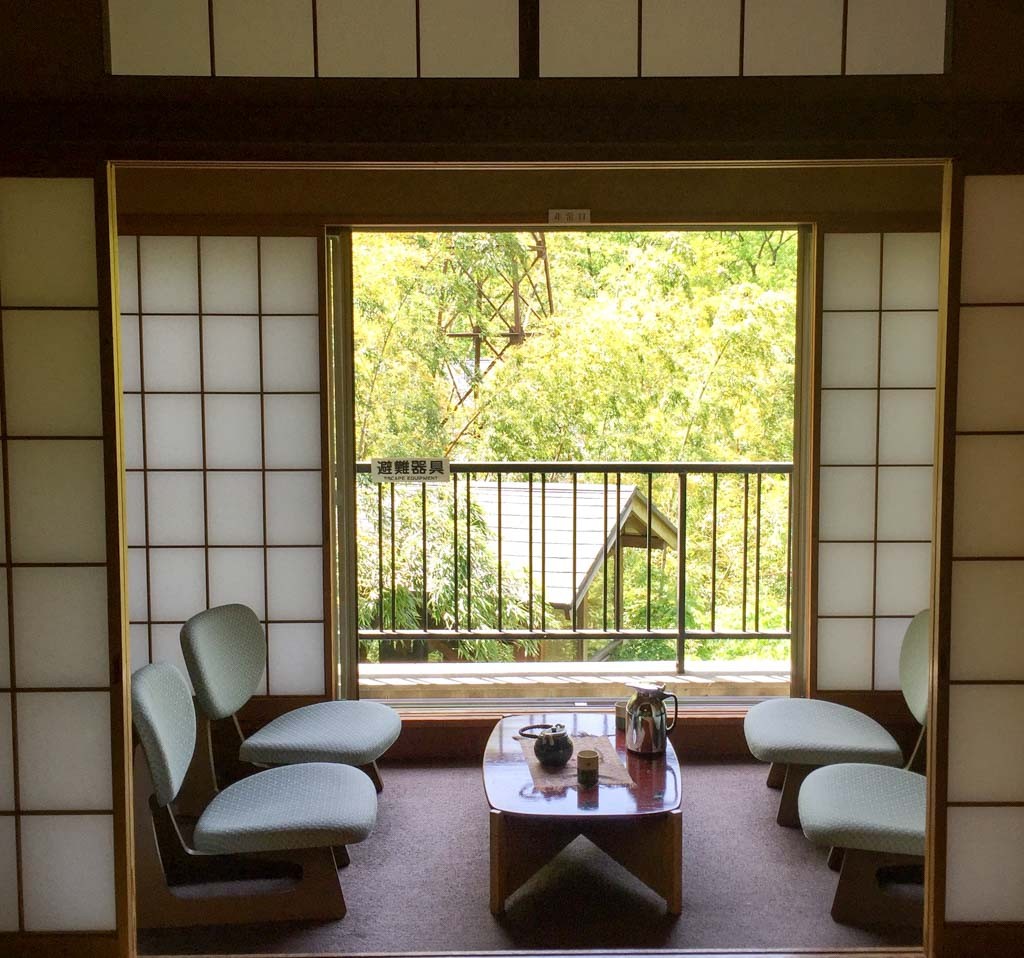 A sitting area in the room
A sitting area in the room
We slipped into the yukata (robes) and tabi (socks) provided and that became the only outfit necessary to wear throughout our stay. I padded off to the female shared bath, aka onsen, eager for my first soak. More restorative than anything I had ever experienced, it was also a good way to whet my appetite for the multi-course dinner to come.
Traditional Kaiseki Dinner
A ryokan kaiseki dinner is an experience unto itself. Dinner at a Japanese Ryokan is typically served in this kaiseki style. Meal times are usually fixed at ryokan so at 7pm on the dot, we heard the paper and wood door slide open gently and a tiny old lady came into the dining area bearing a large lacquer tray filled with plates of food. And so it began.
An aperitif of homemade plum liquor paved the way for 12 courses, each course meticulously plated and consisted of locally sourced or homemade ingredients that were seasonally appropriate.
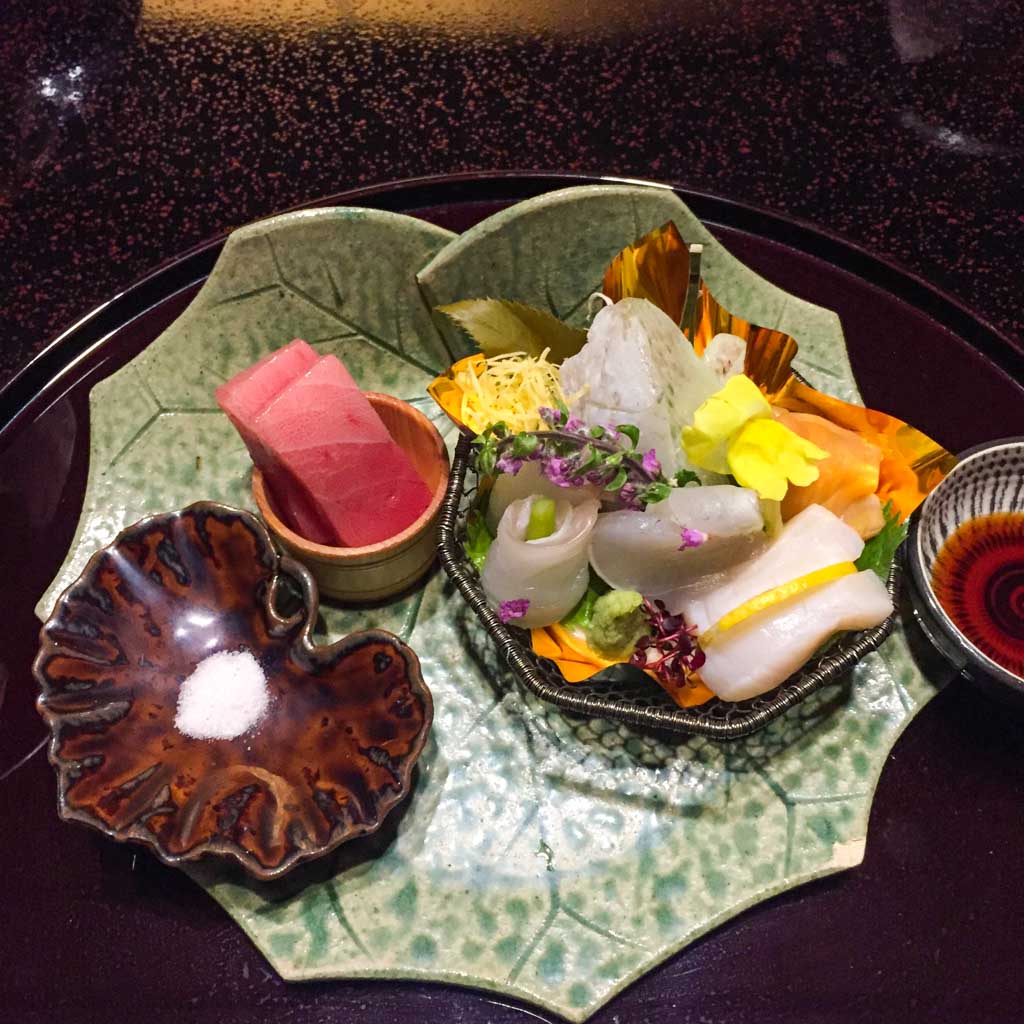 The sashimi course at dinner
The sashimi course at dinner
Another soak post-dinner, this time in a private bath reserved upon check-in was all that was needed to send me into deep slumber whilst nestled in the comfortable futon that were discreetly laid out during dinner.
The view upon waking up was a complete surprise, looking at the lush mountains of Hakone and a cloudless blue sky made for a very good morning indeed. No lazy sleeping in here, breakfast is promptly served at 8.30am.
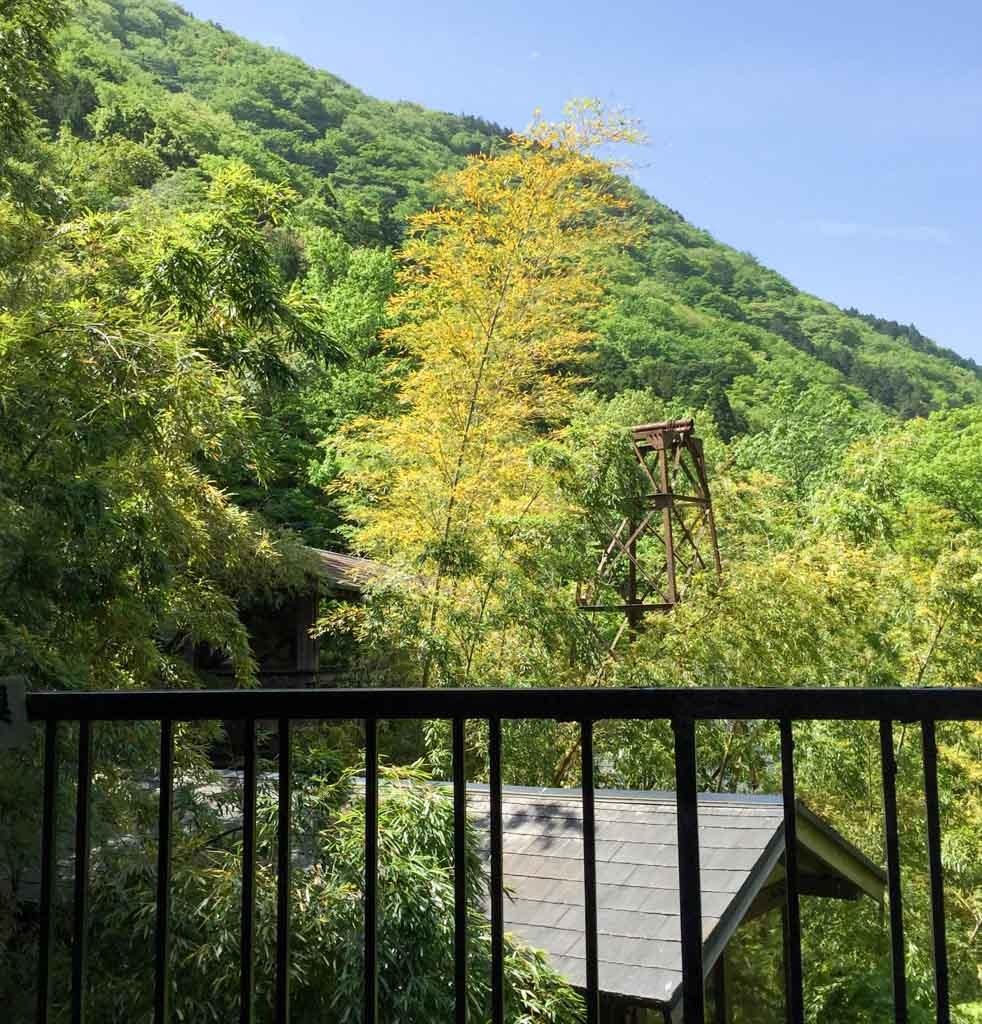 The stunning view upon waking up
The stunning view upon waking up
The same cheery old lady as the night before once again came bearing plates of food, 9 courses at total count. I would gladly trade in my usual pancakes and lattes any time for homemade tofu, gently seasoned fish and chawanmushi here.
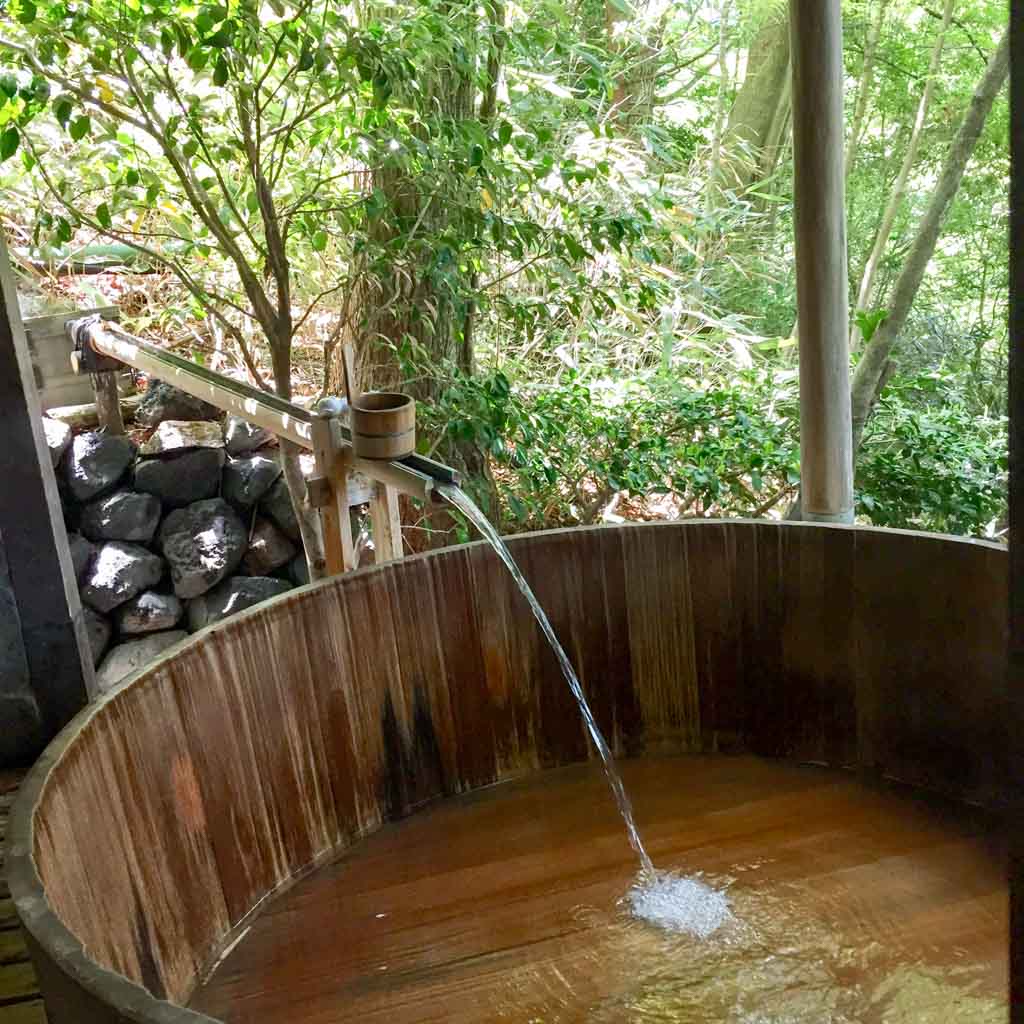
One of the four private onsen at Musashino
Onsen Time
A last dip in another private onsen on the grounds of my Japanese ryokan was needed to prepare me for the long train ride back to Tokyo. Checking out of Musashino was a very reluctant affair, given how spoilt I felt there.
Trust me on this tip: Delay your ride back to Tokyo for an hour or two and cross the small two-lane road at Miyanoshita station to go to Naraya cafe for its jaw-dropping views alongside a small menu of cakes and beverages.
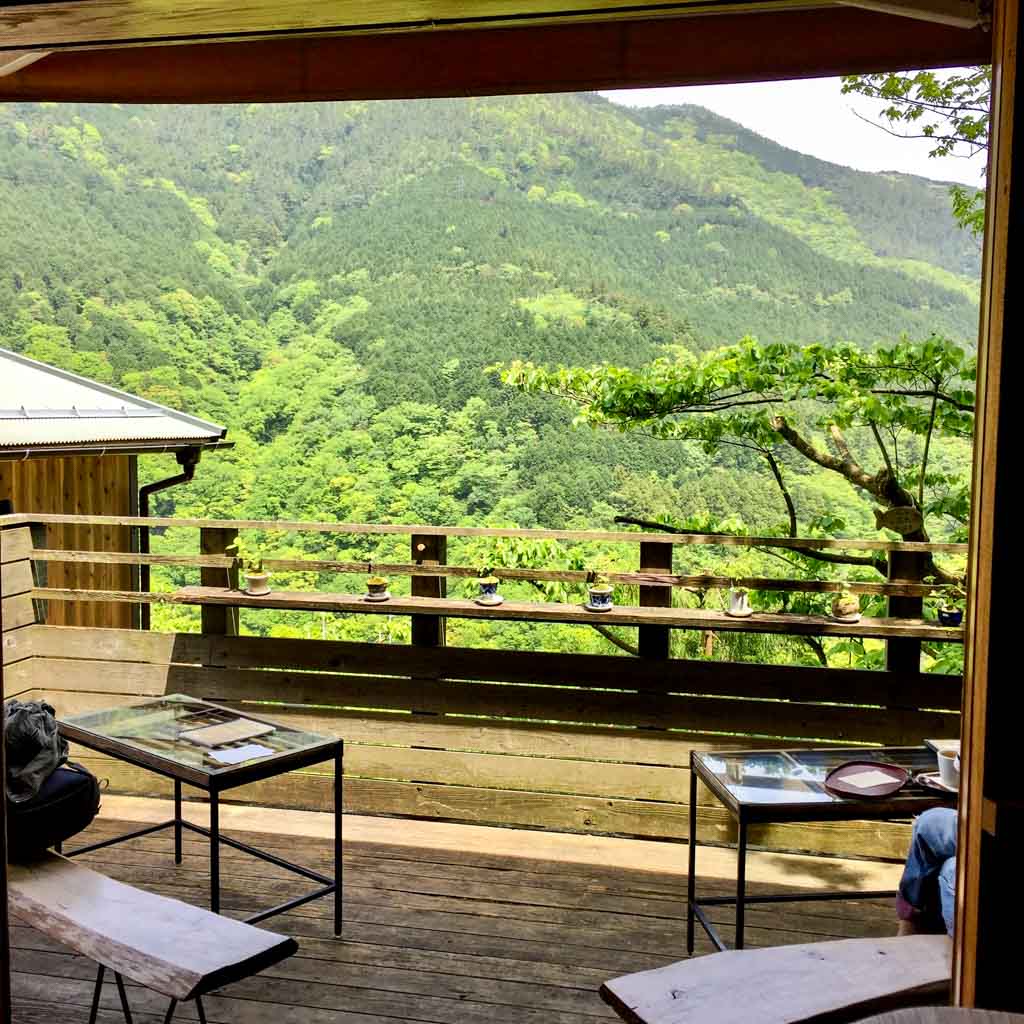 The stunning views of Naraya cafe
The stunning views of Naraya cafe
Ryokans in Tokyo and Kyoto
There are more than a thousand quality ryokan registered with the Japanese Ryokan and Hotel Association. Here are our Tokyo and Kyoto picks for the next time you feel like indulging in a quintessential Japanese experience.
Tokyo Ryokan
Ryokan in Tokyo are few and far between but Hoshinoya Tokyo is bucking the trend of hyper-modern hotels and reintroducing the ryokan concept to Tokyo. The bustling city’s first luxury ryokan is also the only ryokan in Tokyo to use natural spring water piped in from right below it.
Sadachiyo in Tokyo is tucked away on a quiet street near the famous Sensoji Temple and Asakusa Shrine. The traditional but no-frills ryokan in the historic district has a cypress bath and a granite bath for soaking bones weary from a day’s sight-seeing.
Kyoto Ryokan
On the other hand, Kyoto has many ryokan, a good number of them are institutions in their own right.
Hiiragiya is one of the best ryokan in Kyoto and was established in 1818. Having been in the family for 6 generations now and hosted guests like Marilyn Monroe, Hiiragiya is a veritable grand old dame in Kyoto. All rooms in the new and original wings have their own Japanese pine tubs to soak in.
Seikoro isn’t that much newer than Hiigariya, having been established in 1831 and has now been included in the Michelin guide for Kyoto. Where other ryokan are minimal in their decor, Seikoro leans towards kitschy. The ryokan has both private and shared pine baths.
Onsen Etiquette
If all this talk about soaking in baths has got you hankering to be in one yourself, here are some onsen etiquette tips to observe before going.
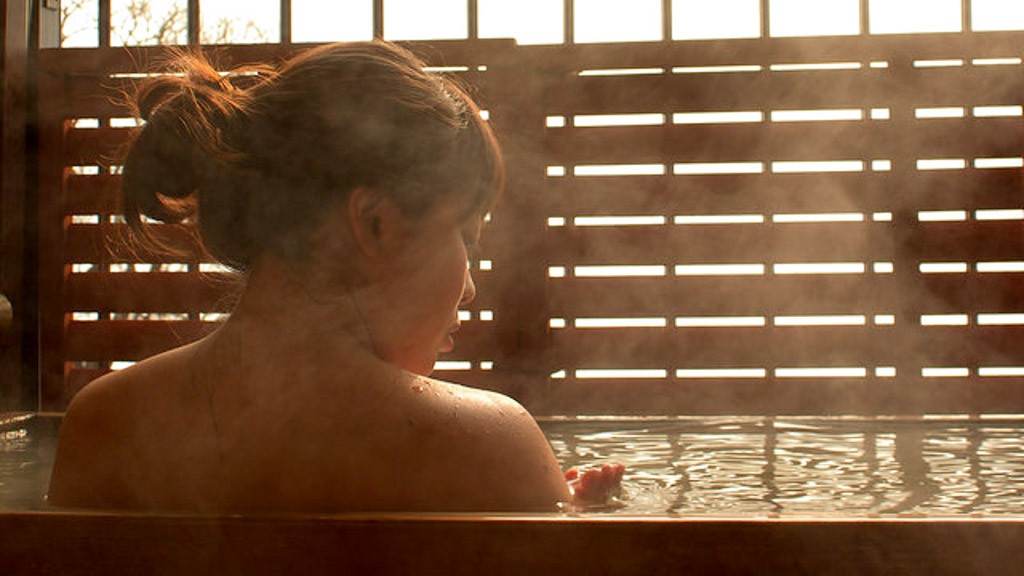 C.C by 3.0 / Japanexperterna.se
C.C by 3.0 / Japanexperterna.se
- Wash yourself thoroughly at the shower area before going into the onsen. Leave no trace of shampoo or soap on your body.
- Slowly ease into the water to adjust to the heat, never splash in.
- You may bring your small wash towel with you but do not wring water into the onsen or wash it there. It is acceptable to fold the towel and put it on your head.
- Do not stare at other patrons.
- Absolutely do not dip your head into the water. For ladies with longer hair, tying hair up is advisable.
- Generally, anyone with tattoos are not permitted to use onsens
More Articles With Activities
From Turkey to Vietnam, these are the best breakfasts from around the world. (It is the most important meal of the day, after all.)
Thrill seekers take note, these pulse-quickening adventures will inspire conversation fodder for years to come—as well as plenty of amazing photos for your Instagram.
